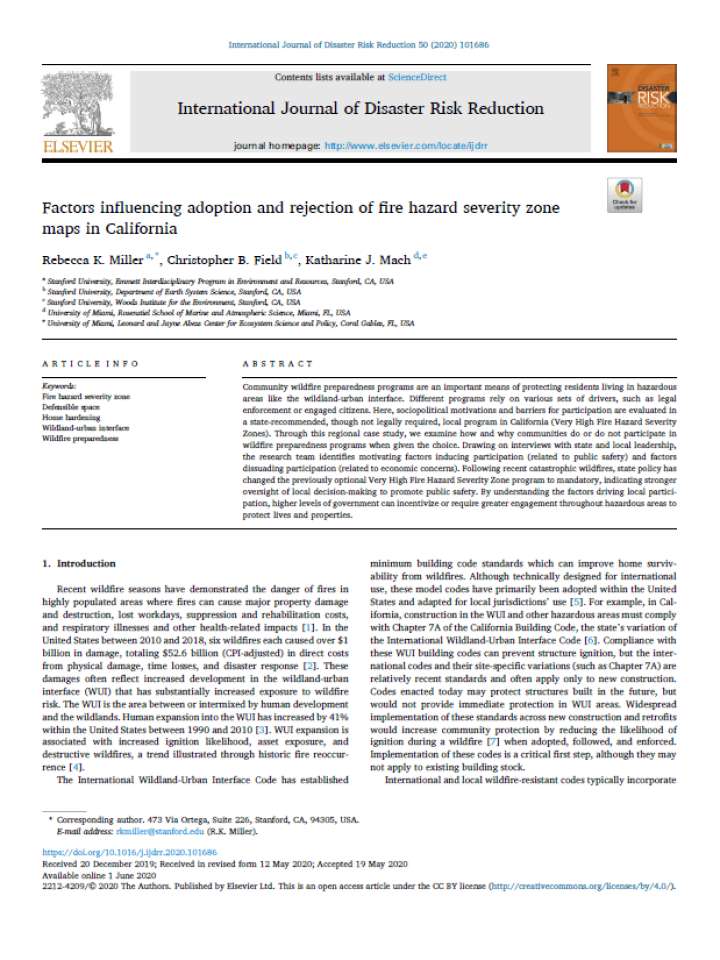Factors influencing adoption and rejection of fire hazard severity zone maps in California
Community wildfire preparedness programs are an important means of protecting residents living in hazardous areas like the wildland-urban interface. Different programs rely on various sets of drivers, such as legal enforcement or engaged citizens. In this research, sociopolitical motivations and barriers for participation are evaluated in a state-recommended, though not legally required, local program in California (Very High Fire Hazard Severity Zones).
Through this regional case study, the authors examine how and why communities do or do not participate in wildfire preparedness programs when given the choice. Drawing on interviews with state and local leadership, the research team identifies motivating factors inducing participation (related to public safety) and factors dissuading participation (related to economic concerns). While public safety concerns drove participation in the program, economic concerns prompted local stakeholders to choose not to participate.
Following recent wildfires in California, state law has revised the formerly optional program to become mandatory, indicating that a higher level of government has intervened in the interest of public safety. These findings suggest that local fears of potential negative economic impacts may override those of public safety, potentially endangering the public. By understanding the factors driving local participation, higher levels of government can incentivize or require greater engagement throughout hazardous areas to protect lives and properties.
Explore further
